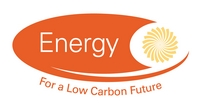Projects
Projects: Projects for Investigator |
||
| Reference Number | NIA_NGET0067 | |
| Title | Trial & Performance Assessment of ACCR Conductor (3M) | |
| Status | Completed | |
| Energy Categories | Other Power and Storage Technologies(Electricity transmission and distribution) 100%; | |
| Research Types | Applied Research and Development 100% | |
| Science and Technology Fields | ENGINEERING AND TECHNOLOGY (Electrical and Electronic Engineering) 100% | |
| UKERC Cross Cutting Characterisation | Not Cross-cutting 100% | |
| Principal Investigator |
Project Contact No email address given National Grid Electricity Transmission |
|
| Award Type | Network Innovation Allowance | |
| Funding Source | Ofgem | |
| Start Date | 01 September 2011 | |
| End Date | 01 January 2014 | |
| Duration | 30 months | |
| Total Grant Value | £600,000 | |
| Industrial Sectors | Power | |
| Region | London | |
| Programme | Network Innovation Allowance | |
| Investigators | Principal Investigator | Project Contact , National Grid Electricity Transmission (100.000%) |
| Web Site | http://www.smarternetworks.org/project/NIA_NGET0067 |
|
| Objectives | The goal of this project is to string ACCR (3M) on the remaining Top phase in order to evaluate and compare the stringing, sagging and termination of these three HTLS conductor types, to monitor their mechanical behaviour during simulated ice loading conditions and to evaluate the practical application of the three. HTLS conductors and their component materials have been extensively tested both during and after their development by the manufacturers and various research organizations, but to date National Grid have yet to carry out such works. This project is successful if we improve the knowledge of alternative conductors. | |
| Abstract | There are many sorts of power flow limitation in modern power systems. If the problem can be solved by a relatively large increase in the thermal rating of an overhead line, re-conductoring the line with High Temperature Low Sag (HTLS) conductor is a possible solution. These conductors are capable of high temperature operation with minimal change in electrical and mechanical properties and have low sag at high temperature when compared to conventional conductors. In order to increase a line’s thermal rating without rebuilding or replacing its structures and foundations, the original conductor can be replaced with a special high-temperature, low-sag (HTLS) conductor having the a similar dimensions and properties as the original, but which can be operated safely and reliably at much higher temperatures with far greater ampacity. The method proposed for this project includes: 1) Review previous test data and installations 2) Procure conductor fittings 3) Carry out site assessment and risk mitigation measures 4) Determine test requirements 5) Erect conductors on YYO route 6) Carry out mechanical and ice loading tests on all 3 conductor types7) Report with recommendationsNote : Project Documents may be available via the ENA Smarter Networks Portal using the Website link above | |
| Data | No related datasets |
|
| Projects | No related projects |
|
| Publications | No related publications |
|
| Added to Database | 17/12/18 | |



